Due to a surprising start to their Bundesliga campaign in which they went undefeated in 10 of their first 12 league matches, including a draw against Borussia Dortmund and a win against RB Leipzig, Freiburg have managed to uphold their place near the upper echelons of the league table. The Baden-Württemberg side currently sit in 8th place, four points out of the Europa League qualification spot. Despite the rotating strike partnership of Nils Peterson and Luca Waldschmidt which has generally been credited for their unexpected results, Freiburg’s defensive style of play has also been intriguing and a critical part towards their success. This tactical analysis will delve into how Freiburg have benefitted from manager Christian Streich’s use of a defensive system.
Defensive shape
Streich typically organises his starting eleven into 3-4-3/4-4-2 formation variations. He places an emphasis on defending the deeper areas of the pitch, and this can be seen in the map below detailing Freiburg’s average shape and player positions this season. Not only is the connection between the back line and proximal deeper midfielders visible, but the utilisation of the wing-backs as attacking wingers in the higher areas of the pitch provides support to the defensive-mindedness of the German manager’s system.
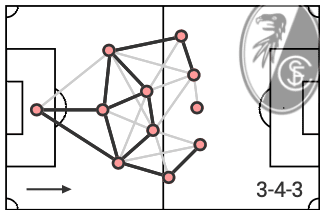
When not on the ball (Freiburg average a very domestic 49.2% possession), the loci of the players allow for a swift and easy transition into even more defensive shapes, such as a 5-4-1 or even a 6-4-0. In the example below, with the opposition moving possession into Freiburg’s half, the wing-backs Jonathan Schmid and Christian Günter immediately shift back alongside the three centre-backs to form a back five.
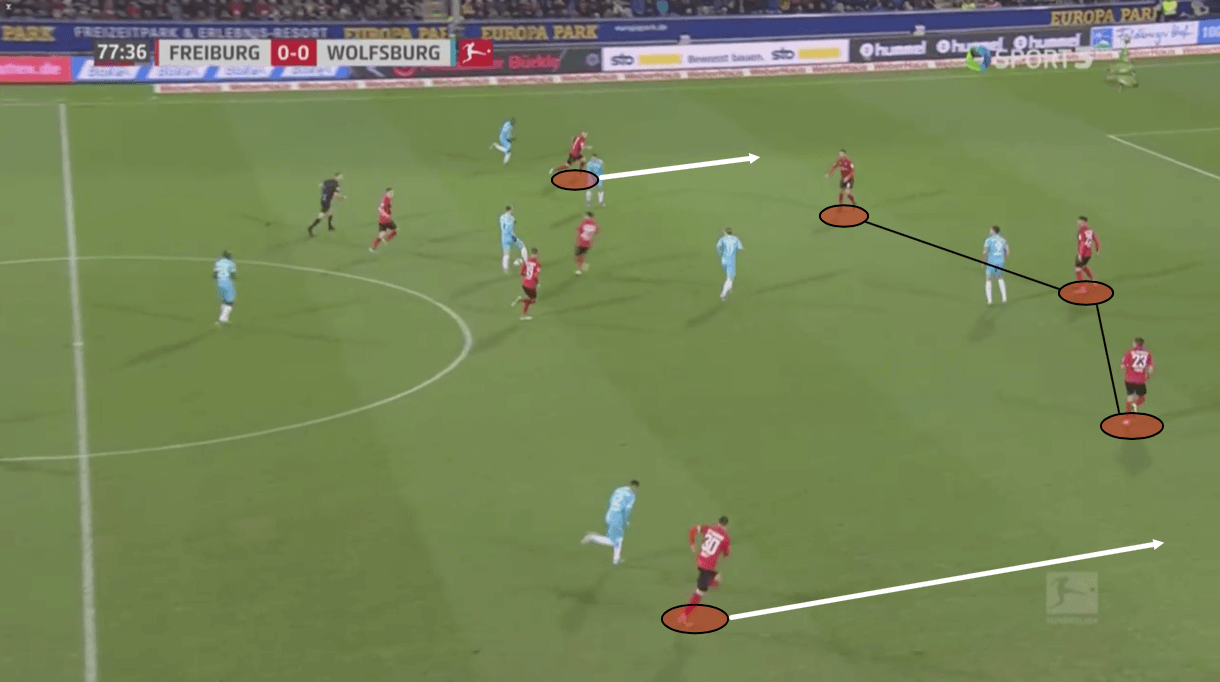
Another, more complex example can be seen below from Freiburg’s recent match against RB Leipzig. Here, Freiburg are situated in a 4-4-2 formation. When Leipzig progress the ball into Freiburg’s half, the ball-side striker drops into the midfield, with the deeper of the central midfielders, in this case Nicolas Höfler, dropping into the backline. Both the defensive-minded Höfler and centre-back Robin Koch are often selected by Streich to play in the midfield and instructed to drop into the backline, furthering the defensive priority and solidity of Freiburg.
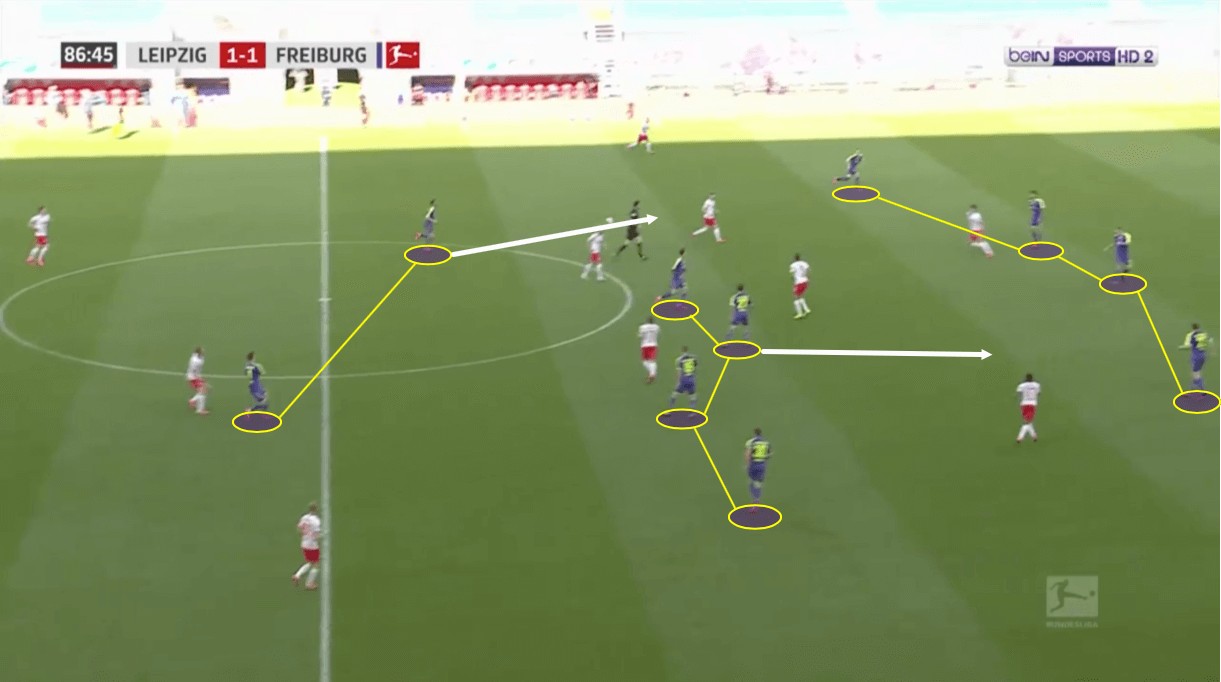
These movements result in a deep block 5-4-1 formation, leaving Leipzig with very limited space to attack centrally and in Freiburg’s 18-yard-box. Importantly defending in this deep block has at times proven very effective especially against superior opposition, highlighting the fact that Streich has coached this tactic effectively into his team.
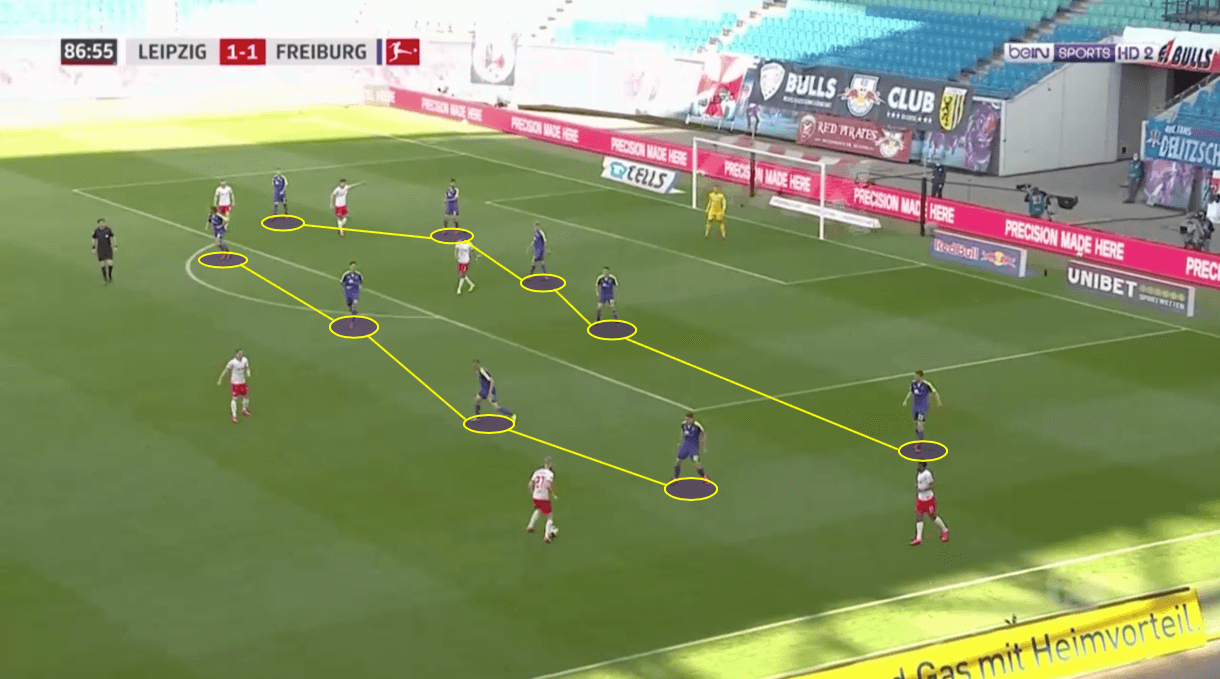
Yet even when defending from deeper areas, front pressing tactics and triggers are occasionally used to fluster the opposition’s buildup. When a team uses a front press along with a deeper defensive block, the defensive lines are inevitably stretched. Streich seems to be content with this during the moments his side is pressing, preferring the back line to preserve their positioning in front of the opposing attackers. In the example below, Hoffenheim’s pass between the centre-backs triggers a press by Freiburg. The two strikers put pressure on the centre-backs, with the ball-side wing-back Christian Günter pressing the opposing right-back. As a result, Hoffenheim are forced to play a long ball due to the pressure, which Freiburg’s back line is then easily able to intercept..
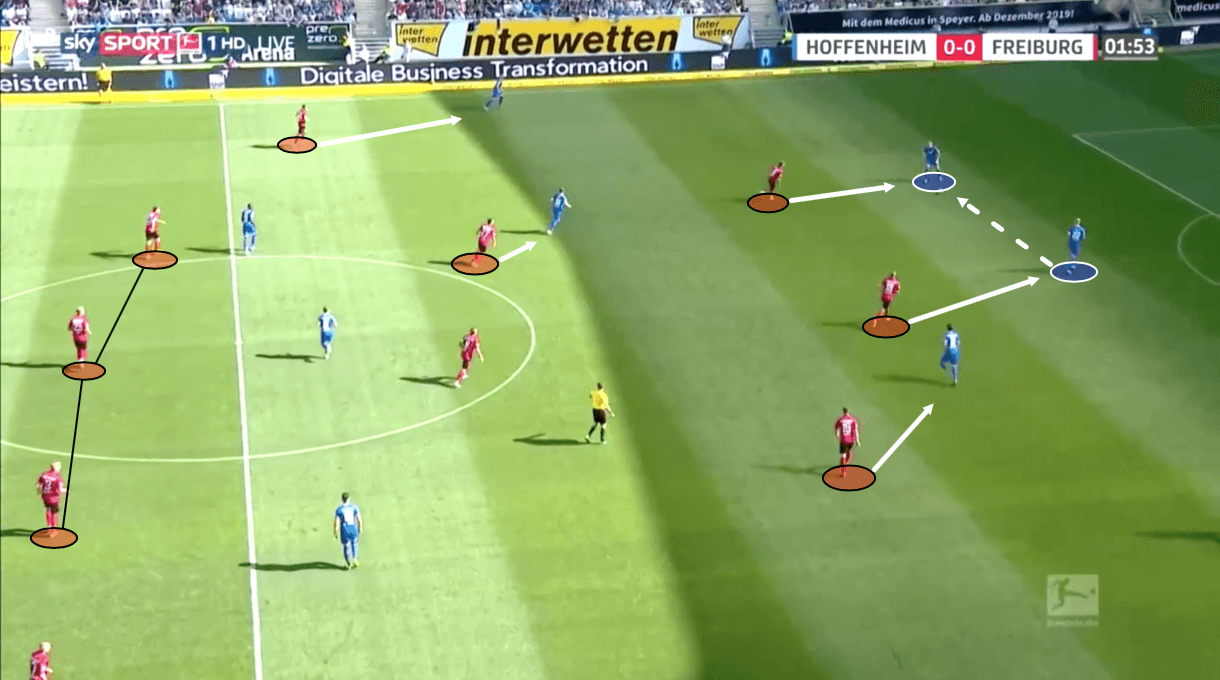
Below is another instance of this scenario. Here, the opposition are able to complete diagonal passes through Freiburg’s front press. But this quick attack was ended due to the deeper positioning and movements of the back line, who were immediately able to track back towards their own box as soon as the press was bypassed.
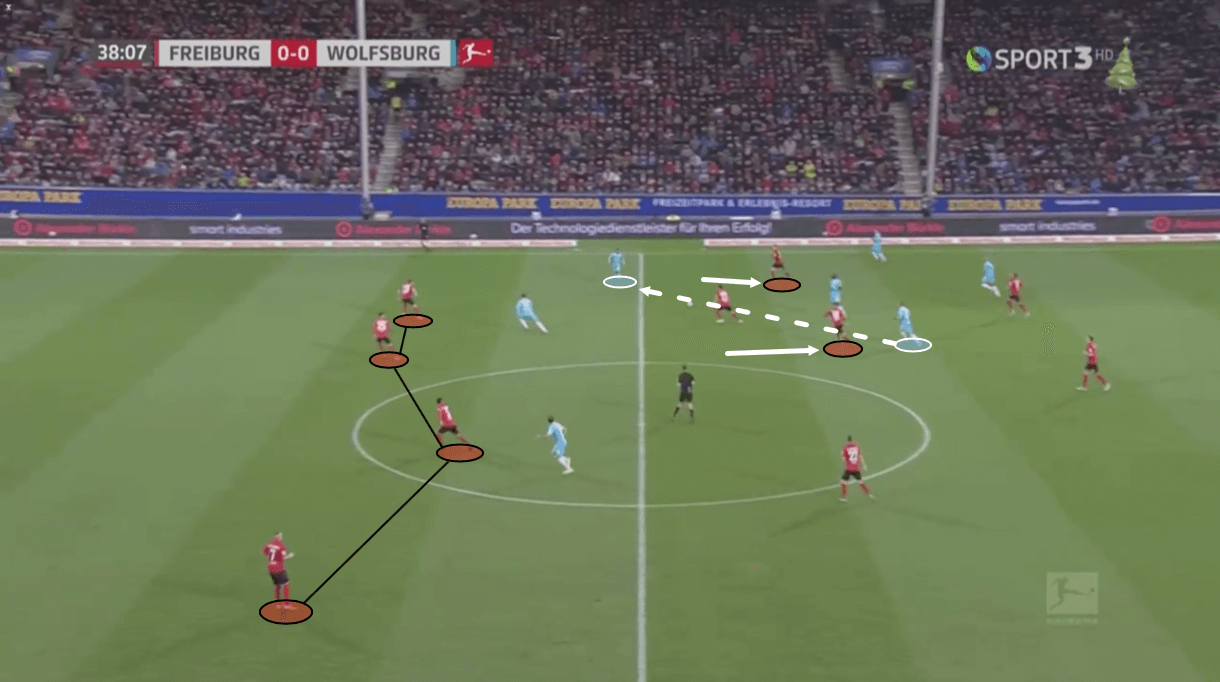
These moments in Freiburg press are relatively rare however. Even so, Freiburg have a considerably high PPDA for a Bundesliga side at 11.41, making them the fifth-lowest pressing team in the German top flight.
Maintaining defensive structure
Particularly when it comes to defending, Freiburg are one of the more unique, against-the-grain teams in the press-heavy Bundesliga. As mentioned previously, they focus on the deeper defensive levels of the pitch and rely on structure over intensity. Below we can clearly see Freiburg in a compact 5-4-1 defensive block against Leipzig.
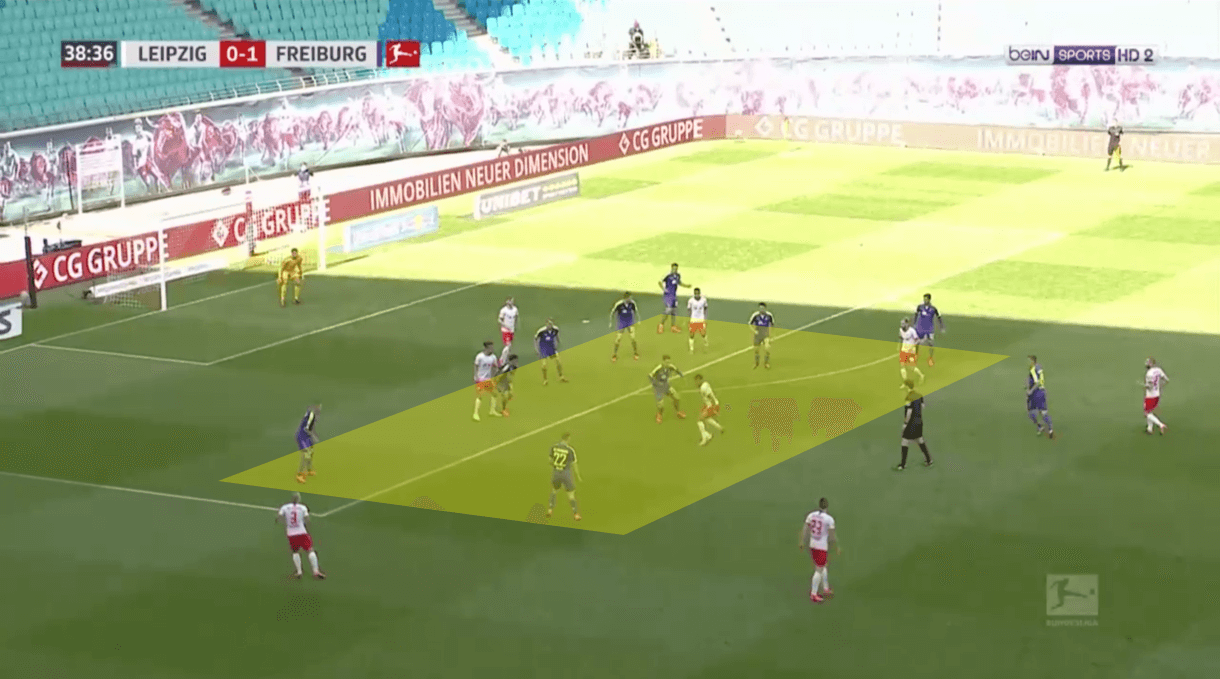
Defending in a low block is not infallible. When doing so, you often sacrifice swathes of space in your defensive third, and when an opposing attacker has space on the ball in the central areas of that third, a defender is often lured towards him. This theoretically leaves the space the defender vacated available, and prevents that space from becoming accessible to the opponent which is crucial in maintaining a successful low block.
Freiburg combat this tactic by using defensive positional rotations to cover the spaces needed. In this example below against Eintracht Frankfurt, centre-back Manuel Gulde moves out of position away from the defensive block to press the ball. Frankfurt then quickly rotate the ball in an attempt to complete the lure, but Koch has already begun to shift into the space vacated by Gulde, and the designed play by Frankfurt fails.
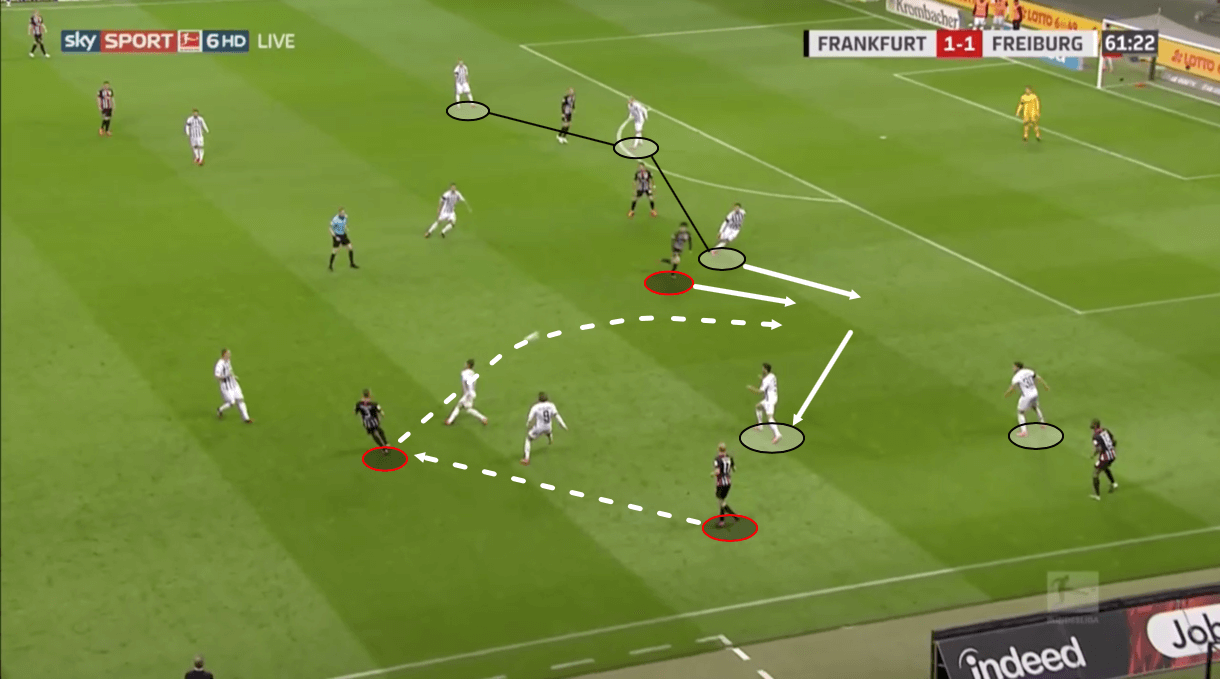
Moments later, Freiburg performed another similar defensive manoeuvre. As Frankfurt again attack down the wide area, Günter presses the receiver of the pass immediately. In turn, Gulde shifts over to cover the space Günter left, and shortly after he provides a valuable clearance out of the box from a cross.
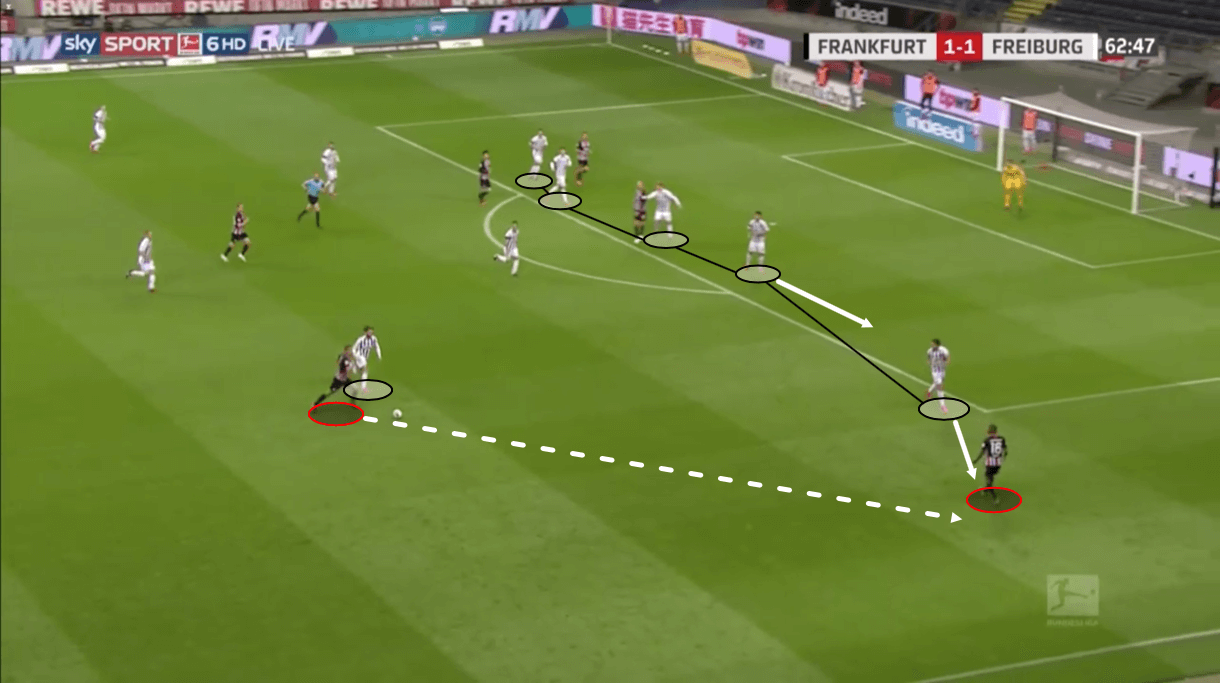
This seemingly slower, less aggressive method of defending can lead to slanted statistics in favour of the opposing team. Take this match for example. Their recent visit to Frankfurt ended 3-3, but the expected goals ratio was an exceptionally contrasting 4.02 to 0.65. The hosts had attempted 34 shots, and 16 of them had hit their target, but Frankfurt were only able to muster one point from the match. In fact, while Freiburg have conceded 40 goals this season- the seventh-lowest in the league- their expected goals against is an incredible 50.84, the third-highest in the Bundesliga. They have also allowed, by far, the most shots with 471 (73 more than the next team). However, thanks to well-coached structural defending, Freiburg have also tallied the most shots blocked in the league with 121 (28 more than the next team). Both centre-back Dominique Heintz and Gulde place in the top 10 for average shots blocked per 90 minutes, and Gulde also appears in the top 10 for most interceptions per 90 minutes(7.38). Finally, Freiburg own the fourth-lowest challenge intensity (duels, tackles, and interceptions per minute of opponent possession) in the Bundesliga.
Scanning
Another key tool Freiburg use while defending is the intuitive scanning of the space around them. In the sequence below, Freiburg are defending in a low block while up a goal against Leipzig. As Leipzig switch play to the opposite half-space on the pitch, Höfler scans the space behind him and notices Heintz marking the man in front of him while leaving the space behind him unguarded.
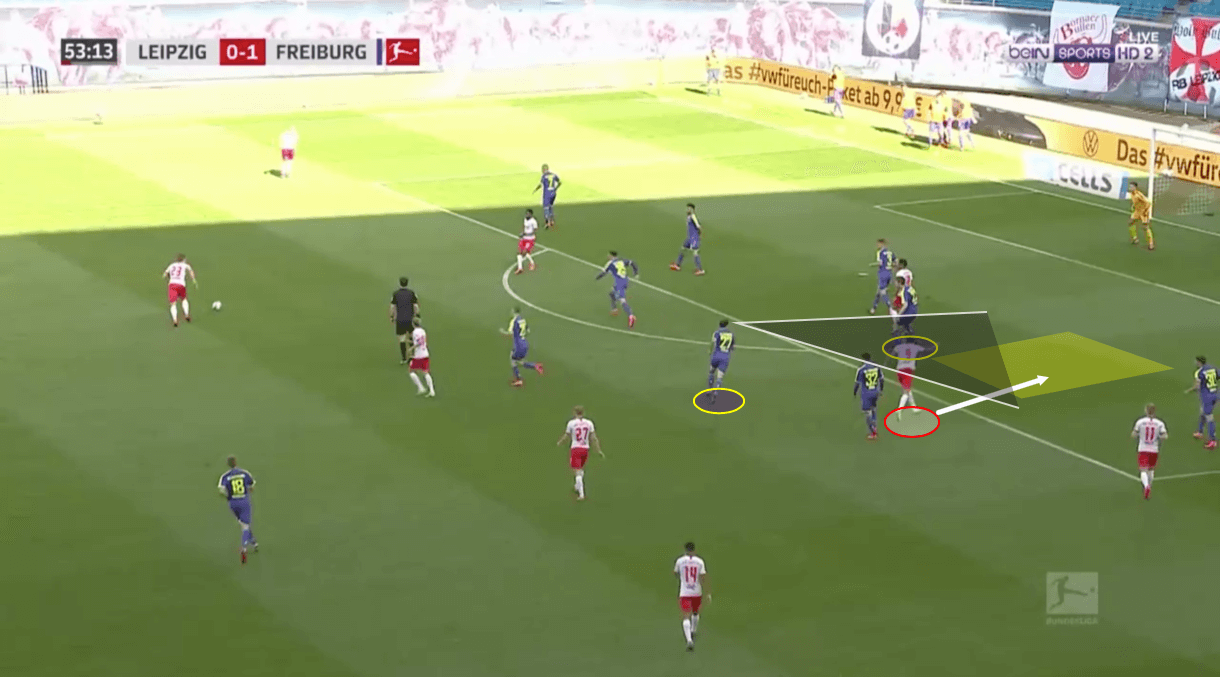
Höfler then points out that open space to Heintz, who quickly drops back into said space, marking Poulsen and taking away Leipzig’s primary target for the cross. The deep block remains organised in a 5-3 and the cross is guided out for a goal kick.
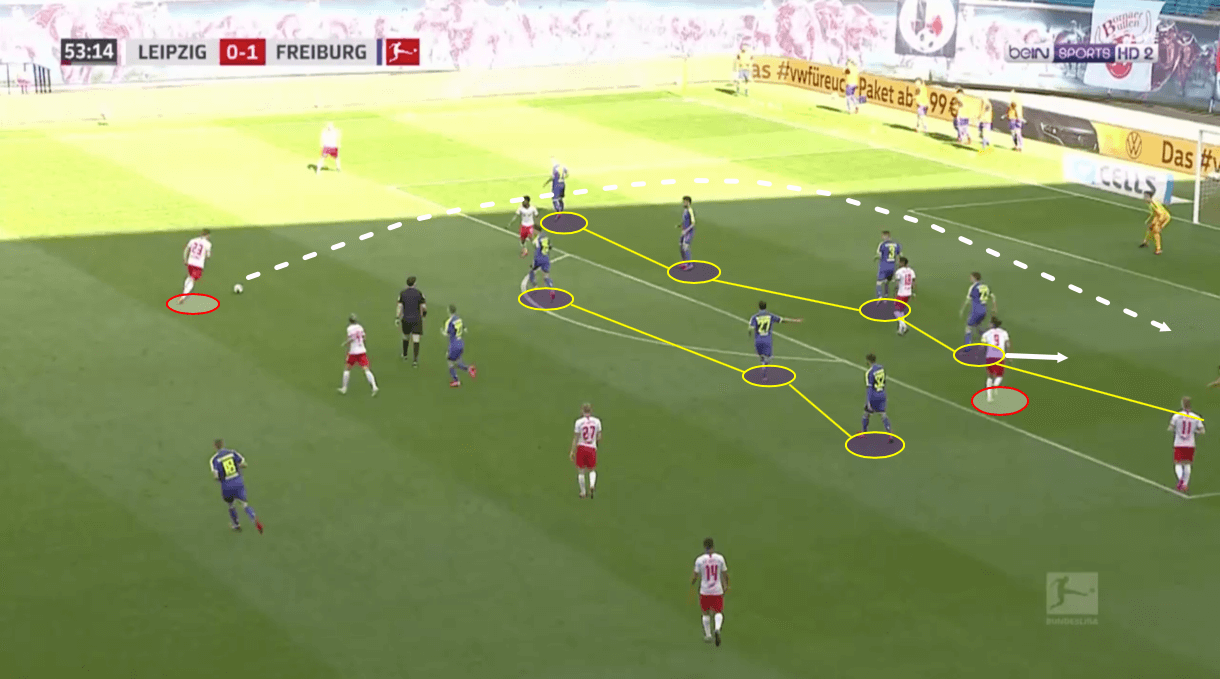
Another strong analysis of Freiburg’s scanning in defence can be seen below. In transitioning to low block defending, the Freiburg players constantly scan for potential exploitable space, even before it exists. In this instance, we again see Höfler scanning the space behind him, this time while tracking back defensively. He notices both the ball-far centre-back Koch marking his man who is driving towards the top of the box and an opposing player looking to make a run into the space behind Koch.
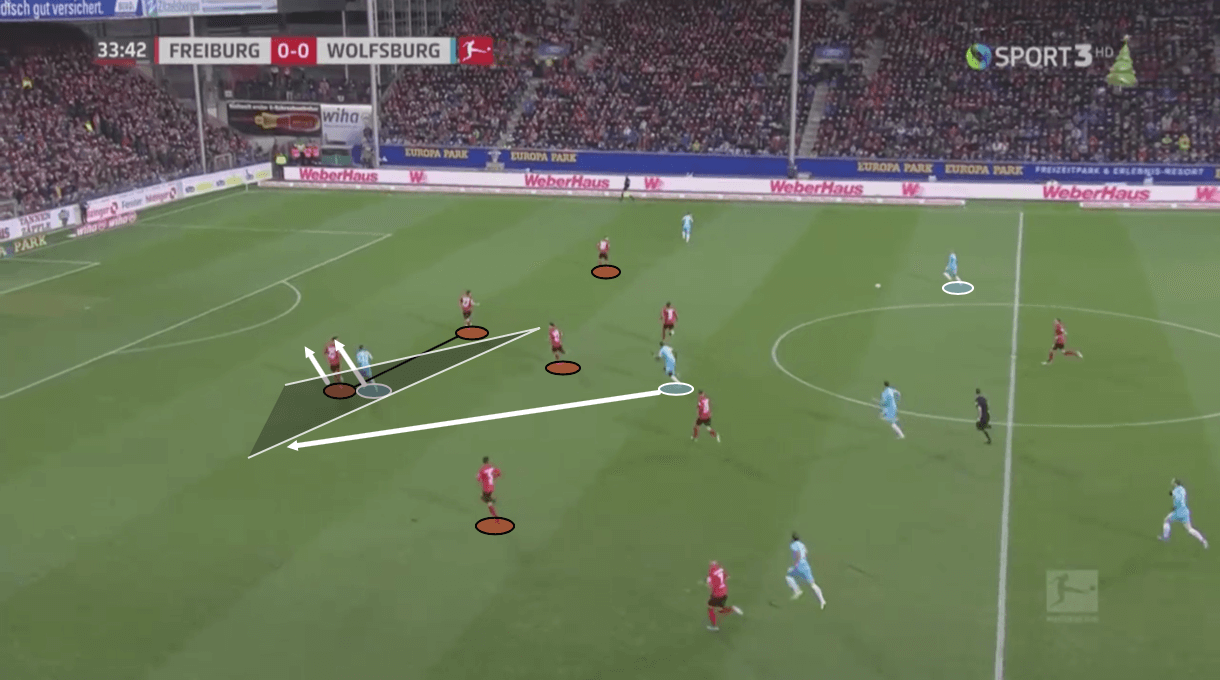
Höfler tracks back into that space within the back line, forming an organised back four with Heintz also scanning at the front of the line. Again an opposing cross was delivered into the box on this play, and again Freiburg’s compact defensive structure was able to parry the ball away to safety.
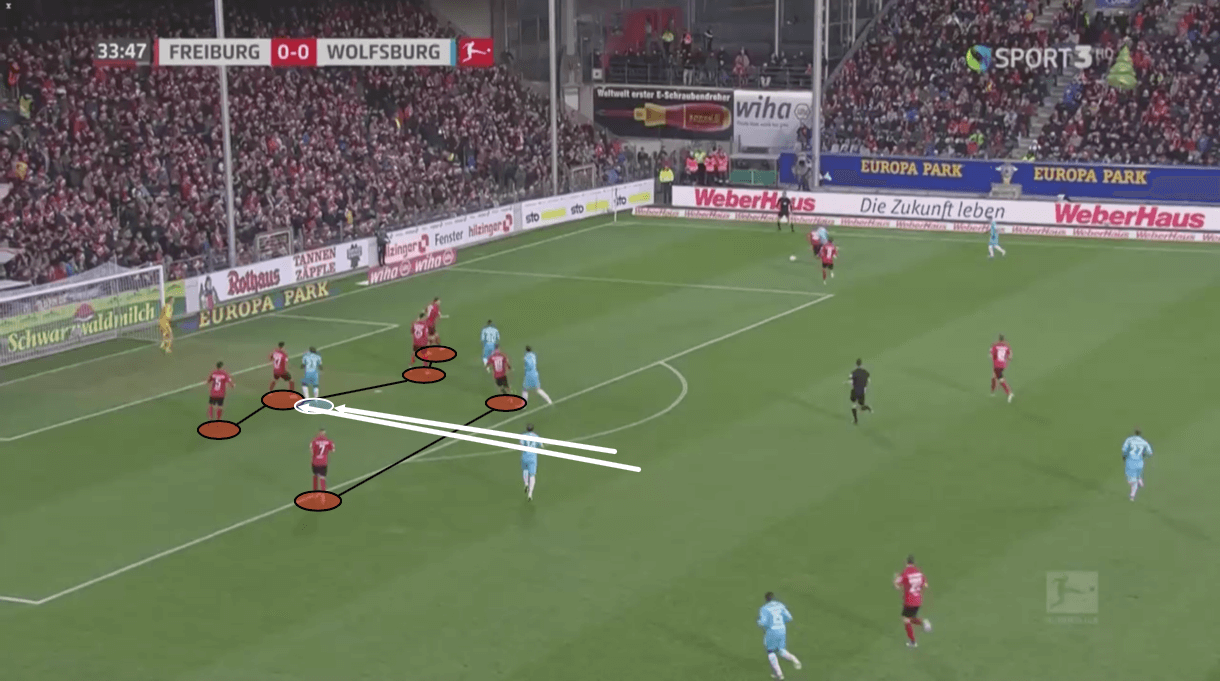
Conclusion
While Freiburg supporters could claim this season has been a substantial success, the words of caution, predominantly sourced to the statistics involved, are warranted. With five of their six remaining matches against top-eight opposition including current league leaders Bayern Munich, the club’s 2019/20 campaign is far from over. Yet this team scout report attests there is also something to be said about Freiburg’s resiliency in defence. Streich’s moulding of his team into a defensive side utilising a low block has proved fruitful more often than not and could become pivotal in finishing in the top half of the Bundesliga table.





Comments